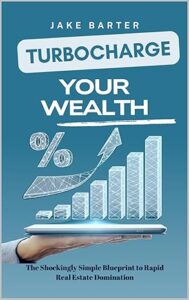As the Reserve Bank of Australia takes steps to ease monetary policy, interest rates are on a downward trajectory. This move has sparked optimism among potential home buyers, with mortgage pre-approvals showing an increase. Anticipation of further rate cuts in the near future has led some economists to predict a potential surge in house prices, driven by the affordability of home loans. Lower interest rates typically translate to increased borrowing capacity, allowing individuals to invest more in real estate and potentially driving up property prices.
When a central bank reduces its benchmark interest rate, mortgage rates usually follow suit. This pattern was evident after the Reserve Bank’s recent rate cut, with major banks swiftly adjusting their rates for both new and existing borrowers. Lower rates significantly impact the cost of servicing loans, particularly in a market where the average house price is around $1 million. For instance, a slight decrease in interest rates can result in noticeable monthly savings for mortgage holders, providing some relief amid high debt burdens.
Moreover, reduced interest rates can enhance the borrowing power of new home buyers. Banks assess borrowers’ ability to repay loans based on their net income surplus, which influences the amount they can borrow. With each rate cut, borrowers find themselves eligible for larger loans, contributing to increased demand in the housing market. This surge in mortgage credit can further escalate house prices, particularly in areas where supply is limited and property values are already high.
While lower rates may seem advantageous, they can also lead to larger mortgages to keep pace with rising property prices. As monthly payments remain relatively stable despite rate cuts, the need for a higher down payment on a new home increases. This dynamic underscores the complex interplay between interest rates, borrowing capacity, and housing affordability, posing challenges for first-time home buyers.
Despite the potential benefits of lower rates, aspiring homeowners may find themselves facing escalating property prices, making homeownership a distant dream for many. Some individuals may rush to enter the market before rates fully adjust, driven by the fear of missing out on favorable deals. However, studies suggest that it takes time for house prices to peak following rate changes, cautioning against hasty decisions. For those opting to rent or explore alternative investments, such as the stock market, careful consideration and financial planning are essential to navigate the evolving real estate landscape.
In conclusion, the impact of interest rate fluctuations on the housing market is multifaceted, influencing borrowing behavior, property prices, and homeownership aspirations. While lower rates can stimulate demand and borrowing capacity, they also pose challenges for prospective buyers, highlighting the need for informed decision-making and financial prudence in navigating the dynamic real estate environment.
📰 Related Articles
- Rate Cuts Spark Property Market Speculation in Australia
- RBA Faces Dilemma Over Interest Rates Amid Housing Market Surge
- RBA Cuts Cash Rate, Offering Relief to Homeowners in 2025
- Home Loan Market Competition Intensifies Amid Anticipated Rate Cuts
- Australian Shares Surge on Rate Cut Speculations and Market Optimism

 Homeowner’s Code
Homeowner’s Code McDonald’s Monopoly
McDonald’s Monopoly Home Loan Handbook
Home Loan Handbook





 Turbocharge Wealth
Turbocharge Wealth